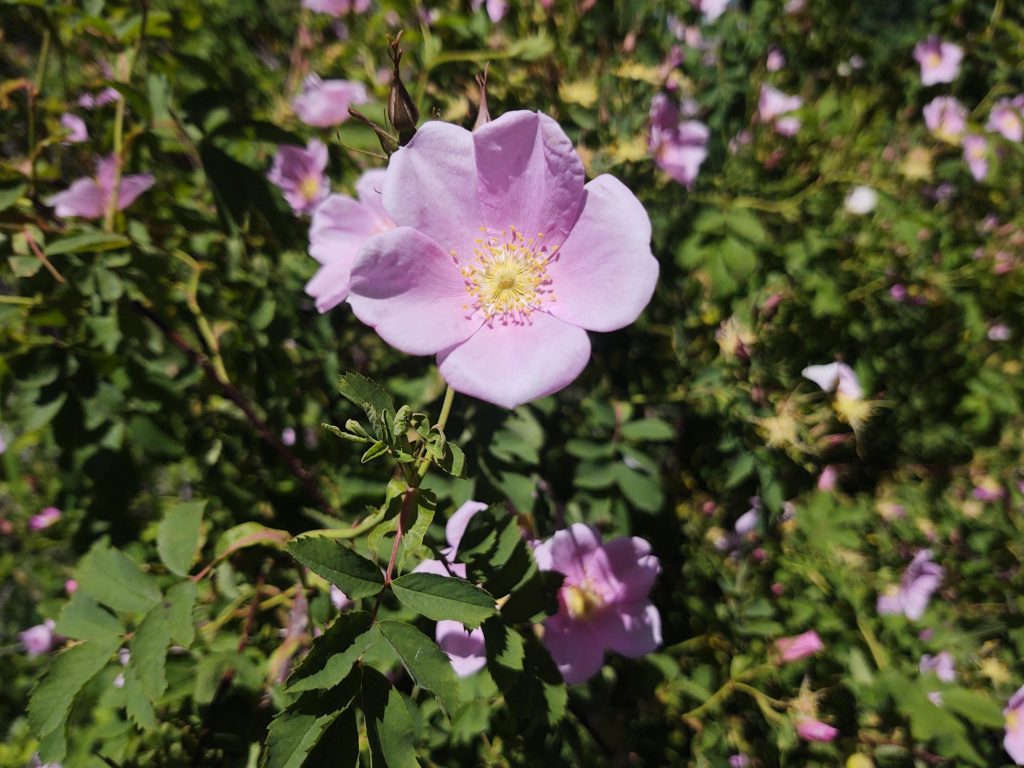Woods Rose

The Woods Rose is also called wild rose or mountain rose, and is a shrubs growing up to 5 feet tall. It sometimes forms nearly impenetrable thickets. Flowers occur on branches lateral from the old wood and are pink to lilac-pink or lavender. It forms a fleshy red fruit or Hip and was named for Joseph Woods, 1776-1864, an early English student of roses. It is widely distributed over western North America from Alaska and Canada to Northern Mexico.
Fruits of Woods rose are a good source of energy and protein and are eaten by many animals, including squirrels, deer, coyotes, and bears. Many birds and mammals are sustained by the persistent dry hips when the ground is covered with snow. The plants are browsed by livestock and big game from spring through fall, but the young spring leaves are especially palatable. Thickets formed by Woods rose provide nesting and escape cover for many birds and small mammals. Birds and mammals eat the fruits and disperse the seeds in droppings.
The hips are a source of vitamin C and are often dried for use in flavoring teas, jellies, fruitcakes, and puddings.
The rhizome system makes Woods rose effective in erosion control, and the species has been used to re-vegetate disturbed sites along road cuts, stream-banks, and seeps. Plants are used as ornamentals near homes to attract birds and other wildlife.
Woods rose is commonly a dominant species on riparian and wetland sites, but it is adapted to a broad range of moisture conditions. It is common in various regions as a pioneer on disturbed sites, especially along roadsides and south-facing cutbanks. It occurs on bluffs, dry grassy slopes, prairie sand-hills, and in clearings in boreal and subalpine forests or sometimes as an understory species in stands dominated by cottonwood, ponderosa pine, and Douglas fir.